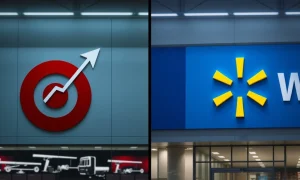Recent reports confirm a significant development for consumers: **Walmart overcharging** customers has led to a substantial penalty. This news highlights a crucial moment for corporate accountability in the retail sector. Consumers, especially those keen on fair business practices, now have a clearer understanding of how large corporations handle pricing discrepancies. The retail giant recently admitted to these overcharges, consequently agreeing to a considerable financial settlement. This action underscores the ongoing importance of consumer vigilance and regulatory oversight in the marketplace.
Understanding the Walmart Overcharging Lawsuit
The core of this issue stems from allegations that Walmart consistently overcharged customers for certain products. Specifically, the lawsuit, known as *Lopes v. Walmart*, claimed the retailer engaged in deceptive pricing practices. This involved two primary areas: weighted goods and bagged produce. Firstly, customers allegedly paid more than the advertised per-pound price for items like meat and seafood. Secondly, the price charged at checkout for bagged produce, such as oranges or apples, often exceeded the listed unit price. This widespread issue affected countless transactions over a period of several years.
The lawsuit asserted that these discrepancies were not isolated incidents. Instead, they represented a systemic problem within Walmart’s pricing system. Consequently, consumers across the country paid more than they should have. The plaintiffs argued that Walmart’s practices violated various consumer protection laws. Furthermore, they sought compensation for all affected customers. This legal challenge ultimately brought the issue of **Walmart overcharging** to the forefront, demanding a resolution for millions of shoppers.
The $45 Million Settlement: A Closer Look
In a significant move, Walmart agreed to a **$45 million settlement** to resolve the class-action lawsuit. This agreement aims to compensate customers who were victims of the alleged overcharges. The settlement covers purchases made at Walmart stores nationwide between October 19, 2018, and January 19, 2024. Therefore, many consumers may be eligible for a refund. The specific amount each customer receives depends on the value of their purchases and whether they retained receipts.
Moreover, the settlement establishes a tiered compensation system. Customers without receipts can still claim a minimum amount, typically between $10 and $25, based on the number of eligible items purchased. However, customers who provide proof of purchase, such as receipts, can claim up to $500. This structure encourages customers to submit claims, particularly those with significant documented overcharges. The settlement fund will cover these payouts, along with legal fees and administrative costs. This marks a substantial financial commitment from the retail giant, directly addressing the impact of **Walmart overcharging**.
- **Eligibility:** Purchases made from October 19, 2018, to January 19, 2024.
- **Covered Items:** Weighted goods (meat, seafood, produce) and bagged produce.
- **Claim Process:** Submit a claim online or via mail by June 5, 2024.
- **Compensation:** Up to $500 with proof of purchase; $10-$25 without receipts.
Consumer Impact and Claiming Your Refund
This settlement offers a tangible opportunity for affected customers to reclaim their money. Many shoppers might not even realize they were victims of **Walmart overcharging**. Consequently, checking past receipts and understanding the claim process becomes crucial. The settlement administrator has launched a dedicated website where eligible customers can file their claims. The deadline for submissions is June 5, 2024. Therefore, prompt action is advisable for those seeking compensation.
To file a claim, customers need to provide basic personal information and details about their purchases. While receipts offer the highest compensation, their absence does not disqualify a claim entirely. This flexibility ensures broader participation in the settlement. Furthermore, this case serves as a vital reminder for all consumers to routinely review their receipts after shopping. Price discrepancies, even small ones, can accumulate over time. This incident highlights the power of collective action in holding large corporations accountable. By participating, consumers reinforce the expectation of fair and transparent pricing.
Ensuring Fair Pricing: Walmart’s Future Commitments
Beyond the financial penalty, the settlement also includes provisions aimed at preventing future instances of **Walmart overcharging**. Walmart has committed to implementing enhanced pricing accuracy measures. These measures include improved employee training regarding pricing protocols for weighted and scanned items. Additionally, the company will likely invest in technology upgrades to minimize errors in its point-of-sale systems. These steps are critical for rebuilding consumer trust and ensuring long-term compliance.
Moreover, the agreement mandates ongoing monitoring of pricing accuracy within Walmart stores. This oversight will help identify and rectify any emerging issues promptly. The company’s proactive steps are essential for maintaining its reputation and adhering to consumer protection standards. While the settlement addresses past grievances, these future commitments are arguably more significant for the everyday shopper. They aim to guarantee that customers pay the correct price every time they shop at Walmart, fostering a more reliable shopping experience.
Broader Implications for Retail Accountability
The **Walmart overcharging** settlement sends a strong message across the entire retail industry. It reinforces the idea that even the largest corporations are not immune to legal scrutiny for pricing inaccuracies. This case highlights the increasing focus on consumer protection by regulatory bodies and advocacy groups. Consequently, other retailers may face increased pressure to review their own pricing systems and ensure compliance. Transparency and accuracy in pricing are fundamental pillars of consumer trust. When these pillars falter, companies face significant legal and reputational consequences.
Furthermore, this incident underscores the importance of class-action lawsuits in empowering individual consumers. These legal mechanisms allow numerous affected parties to collectively seek redress, which might be impractical for individuals acting alone. Ultimately, the Walmart settlement serves as a precedent. It demonstrates that consumers have recourse when companies fail to uphold fair pricing standards. This outcome encourages greater corporate responsibility and better safeguards for consumer rights across all retail sectors.
Conclusion: A Win for Consumer Rights
The **Walmart overcharging** settlement represents a significant victory for consumer rights. It provides substantial compensation to affected customers and compels a major retailer to improve its pricing practices. This outcome underscores the power of collective action and vigilant consumer advocacy. While the process of claiming a refund requires some effort, it is a worthwhile endeavor for those impacted. Ultimately, this case serves as a powerful reminder: consumers deserve fair prices, and companies must be held accountable when they fall short of this fundamental expectation.
Frequently Asked Questions (FAQs)
Q1: What exactly was the Walmart overcharging issue?
A1: The issue involved Walmart allegedly overcharging customers for weighted goods (like meat, poultry, and seafood) and bagged produce. Customers reportedly paid more than the advertised per-pound or unit price at checkout.
Q2: Who is eligible to receive money from the Walmart settlement?
A2: Any customer who purchased weighted goods or bagged produce at a Walmart store in the U.S. between October 19, 2018, and January 19, 2024, is eligible to file a claim.
Q3: How much money can I get from the settlement, and do I need a receipt?
A3: You can claim up to $500 if you have receipts proving your purchases. If you do not have receipts, you can still claim between $10 and $25, depending on the number of eligible items purchased.
Q4: What is the deadline to file a claim for the Walmart overcharging settlement?
A4: The deadline to submit a claim is June 5, 2024. It is advisable to file your claim as soon as possible to ensure it is processed on time.
Q5: How will Walmart prevent future overcharging incidents?
A5: As part of the settlement, Walmart has agreed to implement enhanced pricing accuracy measures, including improved employee training and potential technology upgrades to their point-of-sale systems, to prevent future overcharges.
Q6: Where can I find more information or file a claim?
A6: You can find detailed information and file a claim on the official settlement website, typically managed by a third-party administrator. Search for “Lopes v. Walmart settlement” online to find the official site.
























